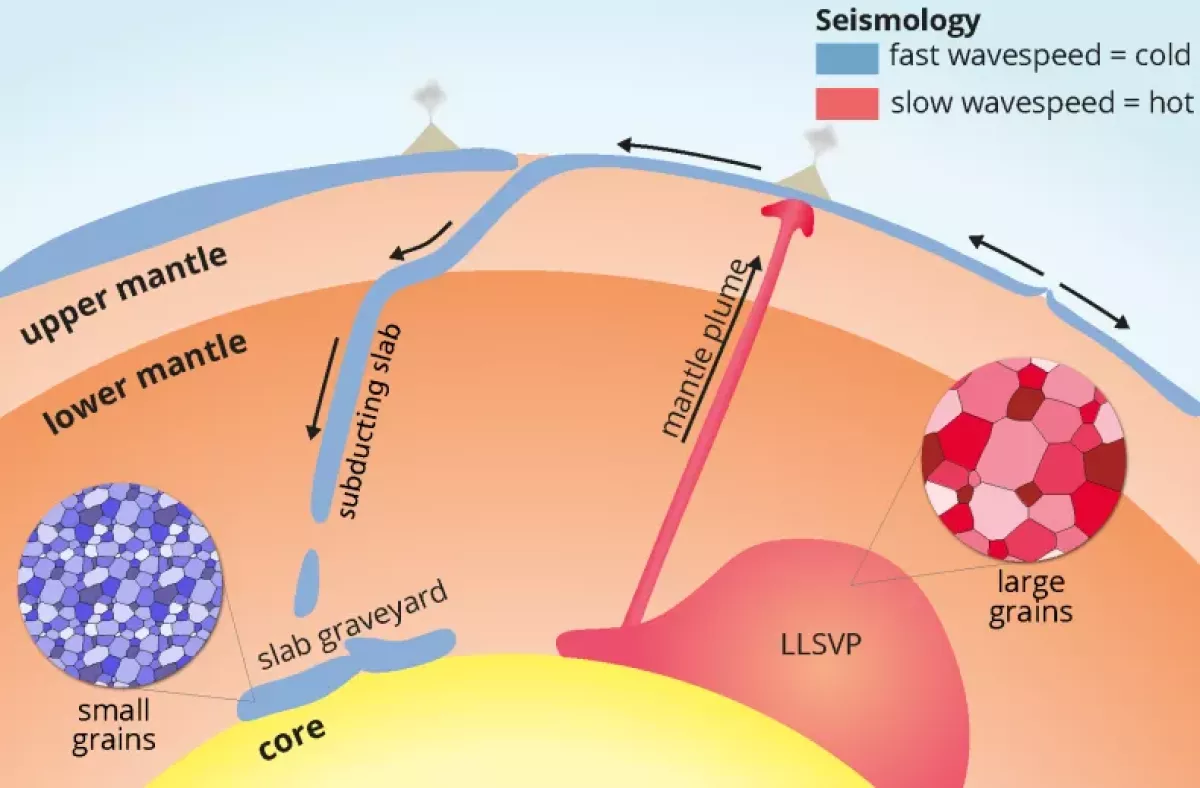Two "supercontinents" buried deep beneath Earth's crust challenge traditional mantle theory
Scientists have discovered two massive continent-sized structures buried deep inside the Earth's mantle, challenging existing theories about the planet’s inner workings. These structures, known as large low-seismic-velocity provinces (LLSVPs), are located beneath the African continent and the Pacific Ocean, almost 2,000 kilometres below the surface.
A recent study published in the Nature journal suggests that these mysterious regions, also referred to as "supercontinents" may be hotter and older than their surroundings, possibly dating back 500 million years. As an article by Newsweek, which sheds light on the findings of the study puts it, their presence raises questions about the behavior of the Earth's mantle and its overall composition.
The study indicates that the mantle may not be as fast-moving or well-mixed as previously thought. The LLSVPs were identified through the analysis of seismic waves generated by earthquakes. Just as ultrasound imaging reveals internal structures in the human body, variations in seismic wave speed and direction provide clues about Earth's deep interior.
"Nobody knew what they are, and whether they are only a temporary phenomenon, or if they have been sitting there for millions or perhaps even billions of years," said study co-author and seismologist Professor Arwen Deuss from Utrecht University in the Netherlands.
The LLSVPs are surrounded by remnants of tectonic plates that have sunk into the mantle over millions of years through a process called subduction. Subduction occurs when one tectonic plate moves beneath another, with the denser plate being forced downward into the mantle. The remains of these plates, known as the "slab graveyard," surround the LLSVPs. However, the study suggests that the LLSVPs are fundamentally different from the surrounding subducted crust, primarily due to their extreme heat.
"We have known for years that these islands are located at the boundary between the Earth's core and mantle. And we see that seismic waves slow down there," Deuss explained. "The waves slow down because the LLSVPs are hot, just like you can't run as fast in hot weather as you can when it's colder."

However, temperature alone does not explain all the seismic properties observed. The researchers propose that the LLSVPs are also composed of much larger mineral grains compared to the surrounding subducted material. This would explain the distinct way seismic waves travel through them.
"Subducting tectonic plates that end up in the slab graveyard consist of small grains because they recrystallize on their journey deep into the Earth," Deuss said. "A small grain size means a larger number of grains and therefore also a larger number of boundaries between the grains. Due to the large number of grain boundaries in the slab graveyard, we find more damping because waves lose energy at each boundary they cross. The fact that the LLSVPs show very little damping means that they must consist of much larger grains."
Like crystals or stalactites on Earth's surface, larger mineral grains take much longer to form. The article reports that scientists believe that this suggests the LLSVPs are much older than the sunken tectonic plates surrounding them. Their age and composition also imply that they are not part of the mantle's convective flow, meaning the mantle may not be as well-mixed as previously believed.
Understanding the nature of these structures could help scientists better explain volcanic activity and other geological phenomena on Earth. "The Earth's mantle is the engine that drives all these phenomena," Deuss said.
For example, mantle plumes—large upwellings of hot material from deep within the Earth—are responsible for volcanic eruptions. These plumes function like bubbles in a lava lamp, rising through the mantle and forming volcanoes when they reach the surface. Scientists believe that mantle plumes originate at the edges of the LLSVPs, which could explain recent volcanic activity in places like Hawaii and Iceland.
This discovery may provide crucial insights into the formation of volcanoes, the building of mountains, and the overall geological evolution of our planet. By studying these deep-seated structures, the article points to geophysicists hoping to refine our understanding of Earth's dynamic interior and its impact on surface activity.
By Nazrin Sadigova








